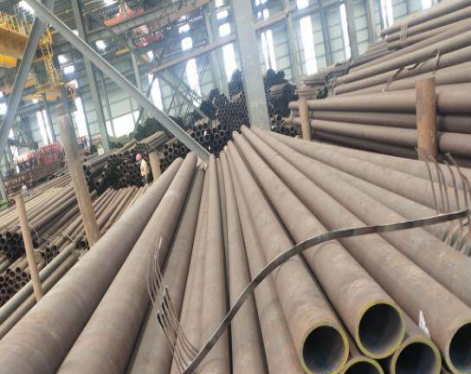With the continuous improvement of people's health, stainless steel products are becoming more and more popular, so how can stainless seamless steel pipe be stainless steel and corrosion resistant? This mainly depends on an alloy element in steel-chromium, which is stainless steel soul.
Chromium is the basic element for the corrosion resistance of stainless steel. When the chromium content in the steel reaches about 12%, the chromium interacts with the oxygen in the corrosive medium to form a very thin oxide film (self-passivation film) on the surface of the steel. Can prevent further corrosion of the steel matrix. In addition to chromium, the alloying elements commonly used in stainless steel seamless pipes include nickel, molybdenum, titanium, niobium, copper, nitrogen, etc., to meet the requirements of various uses for the structure and performance of stainless steel. According to the different metallographic structure of stainless steel, it is divided into semi-ferritic semi-martensitic stainless steel pipe, martensitic stainless steel pipe, austenitic stainless steel pipe, austenitic-ferritic iron stainless steel pipe, etc.
Stainless seamless steel pipes are steel pipes that are resistant to weak corrosive media such as air, steam, and water, and chemically corrosive media such as acids, alkalis, and salts. Because seamless steel pipes have good comprehensive properties, they are widely used in basic projects such as chemical industry, construction, water supply, drainage, petroleum, light and heavy industry, refrigeration, sanitation, plumbing, fire fighting, electric power, aerospace, shipbuilding and so on.
Chromium is the basic element for the corrosion resistance of stainless steel. When the chromium content in the steel reaches about 12%, the chromium interacts with the oxygen in the corrosive medium to form a very thin oxide film (self-passivation film) on the surface of the steel. Can prevent further corrosion of the steel matrix. In addition to chromium, the alloying elements commonly used in stainless steel seamless pipes include nickel, molybdenum, titanium, niobium, copper, nitrogen, etc., to meet the requirements of various uses for the structure and performance of stainless steel. According to the different metallographic structure of stainless steel, it is divided into semi-ferritic semi-martensitic stainless steel pipe, martensitic stainless steel pipe, austenitic stainless steel pipe, austenitic-ferritic iron stainless steel pipe, etc.
Stainless seamless steel pipes are steel pipes that are resistant to weak corrosive media such as air, steam, and water, and chemically corrosive media such as acids, alkalis, and salts. Because seamless steel pipes have good comprehensive properties, they are widely used in basic projects such as chemical industry, construction, water supply, drainage, petroleum, light and heavy industry, refrigeration, sanitation, plumbing, fire fighting, electric power, aerospace, shipbuilding and so on.









